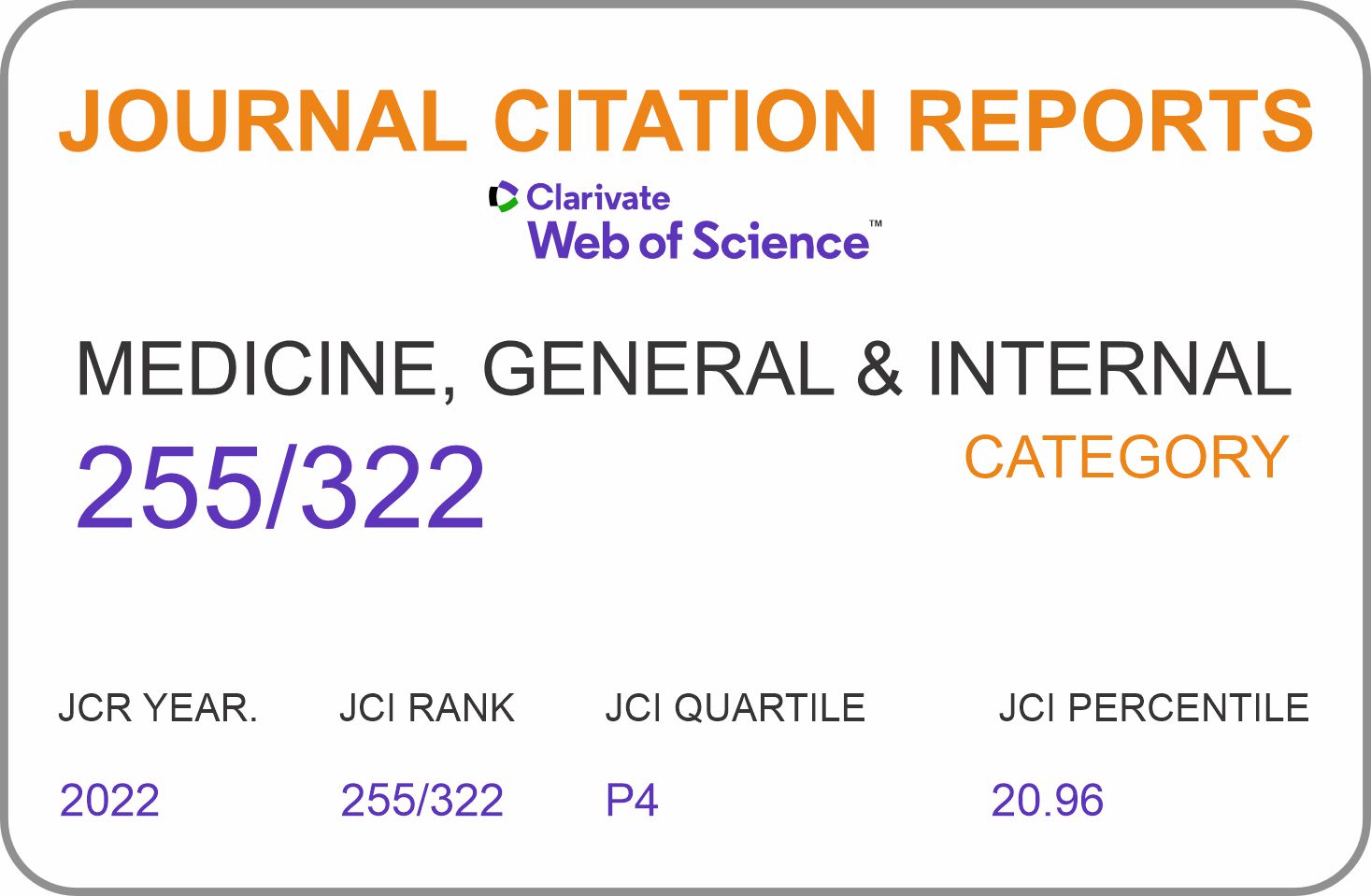Factors associated with the use of the subdermal implant in Peru: Analysis of a population survey, 2021
DOI:
https://doi.org/10.35434/rcmhnaaa.2024.174.2431Keywords:
Family planning services, Population health, Obstetrics, agents femaleAbstract
Background: The use of modern contraceptives has increased, including the subdermal implant, an effective and long-lasting method. However, the determinants predisposing users to its use are not well understood, which is essential for developing family planning strategies. Objective: To determine the factors associated with the use of the subdermal implant as a contraceptive method in women of childbearing age, according to the Demographic and Family Health Survey (ENDES) of 2021. Materials and Methods: A cross-sectional analytical study where records of reproductive-age women who participated in the 2021 ENDES were evaluated, comparing those who used the subdermal implant (cases) with those who used other methods (controls). Adjusted analysis using logistic regression was used to determine the association between variables. Results: Out of 20,496 participants, 6.87% used the subdermal implant.The probability of using the subdermal implant was more significant when the participant already had a child (p<0.001; aOR:3.55) or 2 to 3 children (p<0.001; aOR:2.97) and did not live with her partner (p<0.001; aOR:2.72). On the other hand, the probability of using the subdermal implant was lower when the participant was mainly between 40 and 49 years of age (p=0.007; aOR:0.23), had their first sexual intercourse after age 26 (p<0.001; aOR:0.51) and when the decision to use the method is made with their partner (p<0.001; aOR:0.63). Conclusion: The factors associated with the use of subdermal implant as a contraceptive method in women of childbearing age were having a partner, having children and wanting the contraceptive method.
Downloads
Metrics
References
Kantorová V, Wheldon MC, Ueffing P, Dasgupta ANZ. Estimating progress towards meeting women’s contraceptive needs in 185 countries: A Bayesian hierarchical modelling study. PLoS Med. 2020; 17(2): e1003026. doi: 10.1371%2Fjournal.pmed.1003026
Organización Mundial de la Salud. Métodos anticonceptivos/planificación familiar [Internet]. OMS. 2020. Disponible en: https://shorturl.at/d9nK3
Organización Panamericana de la Salud, Facultad de Salud Pública Bloomberg de Johns Hopkins. Planificación familiar: Un manual mundial para proveedores. Baltimore y Washington: CCP y OPS, 2019. Disponible en: https://iris.paho.org/handle/10665.2/51918
Naciones Unidas. Departamento de Asuntos Económicos y Sociales, División de Población. Family Planning and the 2030 Agenda for Sustainable Development. Nueva York: Naciones Unidas. Disponible en: https://shorturl.at/izt3s
Gutiérrez M. La planificación familiar como herramienta básica para el desarrollo. Rev Peru Med Exp Salud Pública [Internet]. 2013; 30(3): 465–70. Disponible en: https://pubmed.ncbi.nlm.nih.gov/24100824/
Odom RB, Eisenberg DL, Fox IK. Difficult removal of subdermal contraceptive implants: a multidisciplinary approach involving a peripheral nerve expert. Contraception. 2017 96(2): 89–95. doi: 10.1016/j.contraception.2017.05.001
Instituto Chileno de Medicina Reproductiva. Implantes subdérmicos de progestágeno solo [Internet]. Chile; 2016. Disponible en: https://shorturl.at/xOB7T
Organización Panamericana de la Salud. La gran disparidad en el acceso a métodos anticonceptivos refleja inequidades sociales en los países de América Latina y el Caribe [Internet]. OPS. 2019. Disponible en: https://shorturl.at/u1bsR
Ponce de Leon RG, Ewerling F, Serruya SJ, Silveira MF, Sanhueza A, Moazzam A, et al. Contraceptive use in Latin America and the Caribbean with a focus on long-acting reversible contraceptives: prevalence and inequalities in 23 countries. Lancet Glob Health. 2019 Feb;7(2):e227-e235. doi: 10.1016/S2214-109X(18)30481-9
Azula D. Factores asociados a la elección del implante subdérmico como método anticonceptivo. Hospital II – E. Simón Bolívar. Cajamarca - 2019 [Tesis]. Cajamarca : Universidad Nacional de Cajamarca; 2020. Disponible en: http://hdl.handle.net/20.500.14074/3914
Instituto Nacional de Estadística e Informática (INEI). Perú: Encuesta Demográfica y de Salud Familiar 2011. Nacional y Departamental. Lima: INEI; 2012. https://proyectos.inei.gob.pe/endes/
Ministerio de Salud del Perú. Articulando esfuerzos para el Fortalecimiento de Capacidades en Planificación Familiar [Internet]. Minsa. 2021. Disponible en: https://shorturl.at/CnTMq
Ali M, Akin A, Brache V, Landoulsi S, Hubacher D. Extended use up to 5 years of the etonogestrel-releasing subdermal contraceptive implant: comparison to levonorgestrel-releasing subdermal implant. Human Reproduction. 2018;31(11):1–18. doi: 10.1093/humrep/dew222
Manuela-Ticona D, Huanco D, Ticona-Rendón MB. Impact of unplanned pregnancy on neonatal outcomes: findings of new high-risk newborns in Peru. Int Health. 2023; ihad018. doi: 10.1093/inthealth/ihad018
Echaiz J, Blas M, Kancherla V. Unintended pregnancy and its impact on childhood rotavirus immunization in Peru. Rev Panam Salud Publica. 2018;42:e96. doi: 10.26633/rpsp.2018.96
Gebre-Egziabher D, Medhanyie AA, Alemayehu M, Tesfay FH. Prevalence and predictors of implanon utilization among women of reproductive age group in Tigray Region, Northern Ethiopia. Reprod Health. 2017;14(1):62. doi: 10.1186/s12978-017-0320-7
Stevens-Watkins D, Perry B, Pullen E, Jewell J, Oser CB. Examining the associations of racism, sexism, and stressful life events on psychological distress among African-American women. Cultur Divers Ethnic Minor Psychol. 2014; 20(4): 561-9.doi: 10.1037/a0036700
Rosenthal L, Lobel M. Gendered racism and the sexual and reproductive health of Black and Latina Women. Ethn Health. 2020; 25(3): 367-392. doi: 10.1080/13557858.2018.1439896
Sánchez Yovani. Factores determinantes al uso del implanon y su influencia en la satisfacción de la relación de pareja en usuarias del Centro de Salud de Morales en agosto – diciembre 2018 [Tesis]. Tarapoto: Universidad Nacional de San Martín; 2021. Disponible en: http://hdl.handle.net/11458/3911
Abera R, Kote M, Shegaze M, Andarge E, Hussen S. Determinants of implant utilization among married women of childbearing age in Chencha Town,Southern Ethiopia, 2017: A Case-Control Study. Biomed Res Int. 2020;2020:4324382. doi: 10.1155/2020/4324382
Ojo OO, Ndikom CM, Alabi PI. Predictors of the usage of contraceptive implants among women of reproductive age in Ondo State, Southwest Nigeria. J Prev Med Hyg. 2020;61(1):E39–E47. doi: 10.15167/2421-4248/jpmh2020.61.1.1367
Rocca ML, Palumbo AR, Visconti F, Di Carlo C. Safety and Benefits of Contraceptives Implants: A Systematic Review. Pharmaceuticals. 2021;14(6):548.doi: 10.3390/ph14060548
Mesha M, Alemayehu A, Daka D. Prevalence and factors associated with early discontinuatio rate of Implanon utilization among women who ever used Implanon in Kucha District Gamo Gofa Zone, Southern Ethiopia. BMC Womens Health. 2020; 20(1): 239. doi:10.1186/s12905-020-01096-1
Pritt NM, Norris AH, Berlan ED. Barriers and Facilitators to adolescents use of long-acting reversible contraceptives. J Pediatr Adolesc Gynecol. 2017; 30(1): 18-22. doi: 10.1016/j.jpag.2016.07.002
Moray KV, Chaurasia H, Sachin O, Joshi B. A systematic review on clinical effectiveness, side-effect profile and meta-analysis on continuation rate of etonogestrel contraceptive implant. Reprod Health. 2021; 18(1): 4. doi: 10.1186/s12978-020-01054-y
Ministerio de Salud. Campaña de planificación familiar: Información sobre salud sexual y métodos anticonceptivos para una vida sexual saludable. [Internet] Lima: MINSA. Disponible en: https://shorturl.at/JVeCn
Lopez LM, Steiner M, Grimes DA, Hilgenberg D, Schulz KF. Strategies for communicating contraceptive effectiveness. Cochrane Database Syst Rev. 2013 Apr 30;(4):CD006964. doi: 10.1002/14651858.cd006964.pub3
Jianzhong Z, Ma Y, Wihna L. Strategies for communicating contraceptive effectiveness. Public Health Nursing. 2014; 31(59: 438-440. doi: 10.1111/phn.12101
Downloads
Published
How to Cite
Issue
Section
Categories
License
Copyright (c) 2025 Ethel Maribel Lázaro-Motta, Lauro Marcoantonio Rivera-Felix, Alexander Rios-Rios, Victor Hugo Moquillaza-Alcantara

This work is licensed under a Creative Commons Attribution 4.0 International License.















